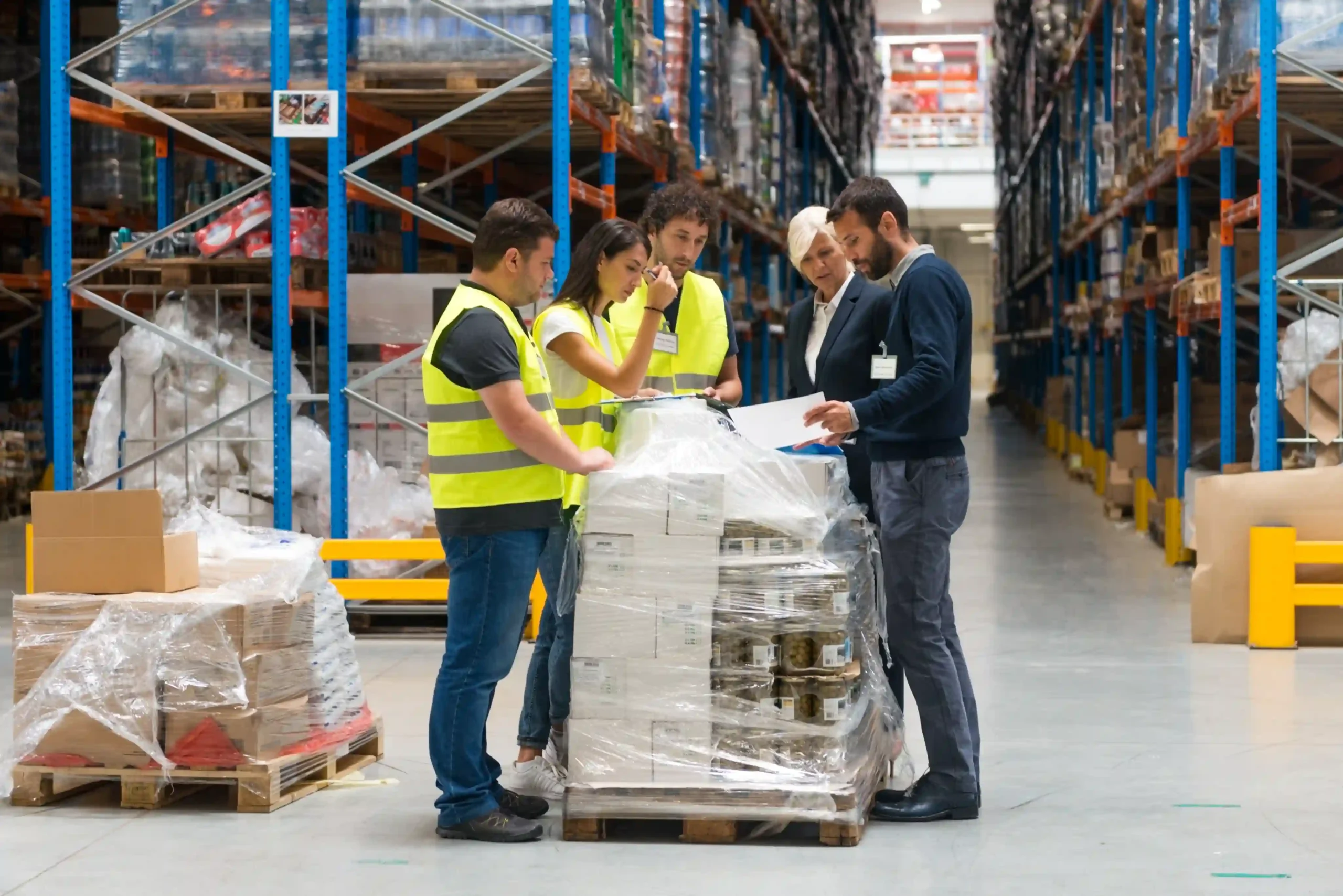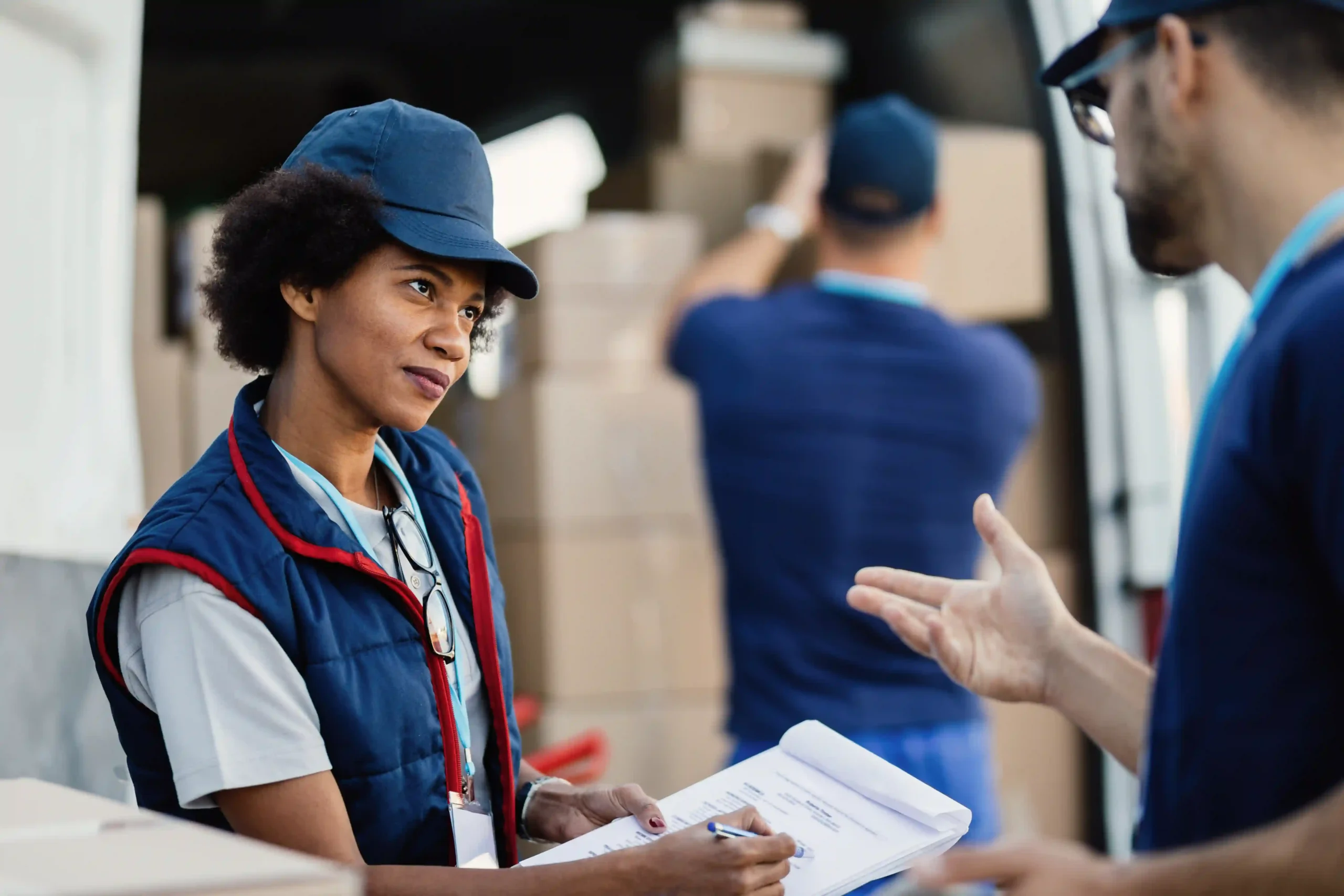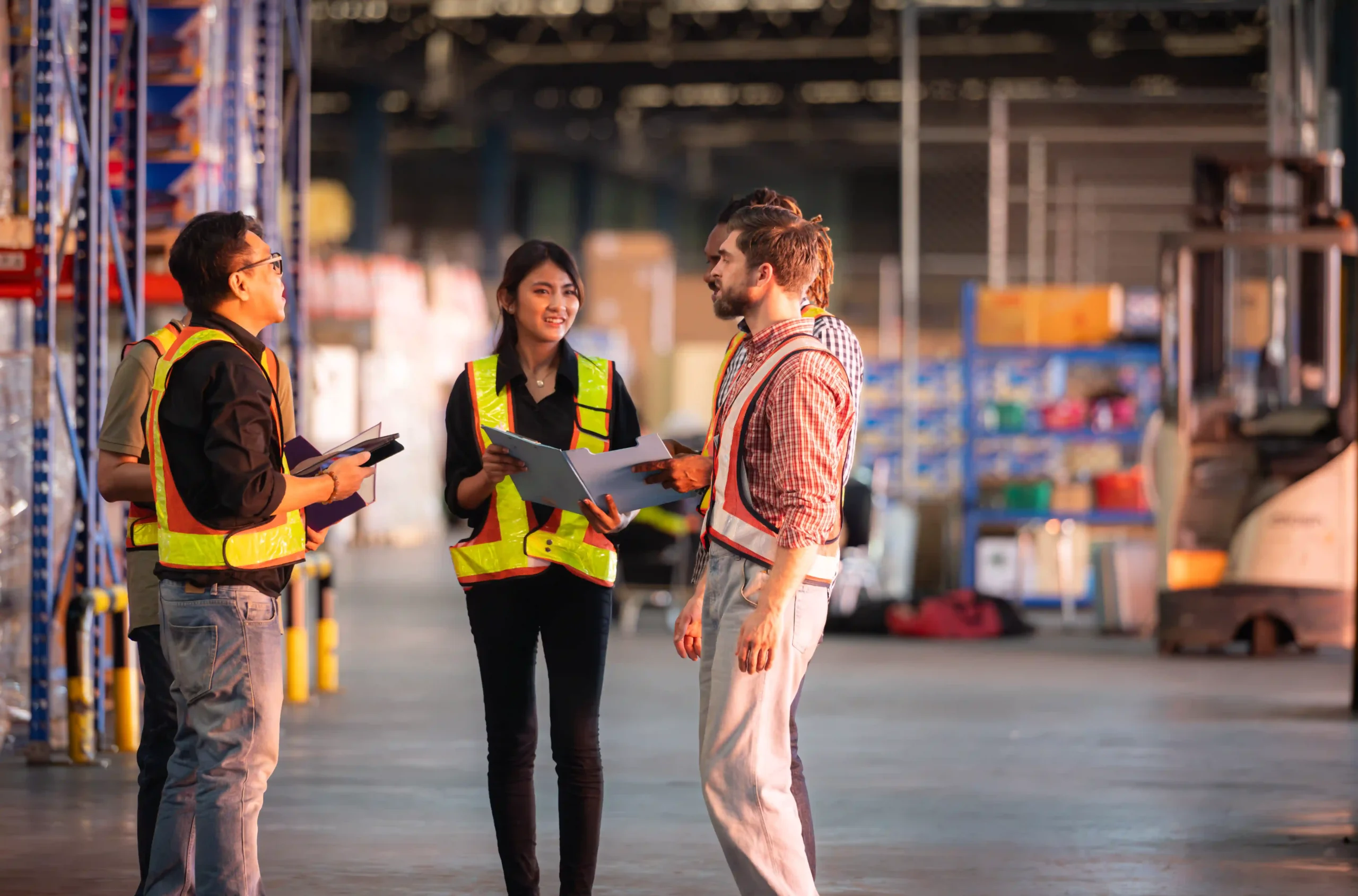The term 3PL distribution services stands for third-party logistics providers who manage the flow of goods for businesses. In simple terms, it means outsourcing parts—or all—of your logistics operations to a company like ours.
At Tri-Link FTZ, we step in to store your products, pack them when an order is placed, and make sure they get to your customers quickly and accurately. We also manage returns, handle compliance, and provide full visibility into your inventory.
Think of us as your behind-the-scenes logistics powerhouse, letting you focus on growing your brand while we take care of moving your products. When I first got into this business more than three decades ago, fulfillment was a manual, fragmented process.
Today, the technology behind 3PL distribution services has changed the game. With real-time tracking, integrated ecommerce tools, and warehouse automation, we’re no longer just movers of boxes—we’re strategic growth partners.

Over the years, I’ve worked with companies of all sizes—from startups launching their first product line to global brands needing faster access to new markets. What I’ve noticed is that 3PL distribution services become a game-changer for businesses at a tipping point.
Maybe you’re running out of warehouse space. Maybe your team is drowning in fulfillment tasks. Or maybe your customers expect two-day shipping, and you can’t deliver consistently.
Ecommerce brands are some of our biggest clients. They’re digital-first, agile, and often have unpredictable sales cycles.
We’ve helped supplement companies, skincare startups, and fashion brands scale up without needing to build a distribution network from scratch. B2B companies also benefit, especially those shipping palletized goods to retailers or wholesalers.
When we work with these clients, we don’t just store and ship—we become part of their business engine, helping them move with speed and precision.
Let me walk you through what it looks like behind the curtain. When a client signs on with us, the first thing we do is map their current supply chain.
We figure out where the pain points are. Maybe they’re dealing with inventory loss.
Maybe their order accuracy is low. From there, we design a custom solution that includes storage in our FTZ-approved warehouses, inventory management, order picking and packing, and multi-channel shipping.
One of our apparel clients came to us with shipping times averaging six days. Within 90 days of moving to our 3PL distribution services, their average was down to two and a half days, and their return rate dropped by nearly 15%.
That’s what happens when fulfillment isn’t just a function—it’s a strategy. Here’s a simplified snapshot of what we do at each step:
Function | Description |
Receiving | Goods are checked in, labeled, and stored accurately. |
Inventory Management | Products tracked in real time with our WMS. |
Order Fulfillment | Picking, packing, and shipping to customers. |
Reverse Logistics | Handling returns and restocking. |
Reporting & Analysis | Customized data dashboards for visibility. |
And this process isn’t just plug-and-play. We customize it.
We ask: Do you need FDA-compliant storage? Do you want sustainable packaging?
Do you sell on Shopify, Amazon, or all of the above? We integrate with it all.
If you’re still managing logistics in-house, you may not realize how much it’s costing you. Labor, storage, packaging materials, software—it adds up fast.
But the real cost is time and focus. Every minute you spend coordinating with carriers or chasing late orders is time you’re not spending on product development or customer engagement.
With 3PL distribution services, the economies of scale become your secret weapon. We ship in bulk and negotiate rates with major carriers.
That means our clients often pay less per order than they would on their own. Plus, with multiple fulfillment centers across the country and within foreign trade zones, we reduce transit times and eliminate some duties, saving international shippers even more.
Here’s where I get passionate. Logistics isn’t just about moving goods. It’s about delivering promises.
When a customer places an order, they’re not just buying a product—they’re buying trust. If you want to grow, your fulfillment operation needs to be as strong as your sales funnel.
And that’s what we do at Tri-Link FTZ.

One of the most common questions I get from business owners is, “How do I know if I’m ready to outsource fulfillment?” From my experience, the answer usually becomes clear once a company starts facing these problems.
If you’re struggling to keep up with orders, running out of warehouse space, or seeing a spike in returns due to shipping delays or errors, then it’s time to consider 3PL distribution services. A telltale sign is when logistics is no longer helping your growth—it’s slowing it down.
You may find your team is spending more time managing inventory and shipping issues than they are on marketing or sales. Maybe you’re missing out on new markets because you don’t have a regional presence.
Or perhaps your customer service reps are overwhelmed with “Where’s my order?” messages. When these issues start stacking up, it’s not just a problem—it’s a barrier to growth.
That’s where a third-party logistics partner like Tri-Link FTZ steps in.
Like any business relationship, outsourcing logistics isn’t without risks. One of the biggest concerns we hear from potential clients is control—giving up the ability to touch every box or see every order in real time.
I get it. Letting go can be hard, especially when you’ve built your business from the ground up. That’s why transparency is key. At Tri-Link FTZ, we provide real-time dashboards, detailed reporting, and an open line of communication with your account manager.
You’ll know what’s happening with your inventory and orders 24/7. Another challenge is onboarding.
Transitioning to a 3PL takes time, and if it’s not managed well, it can disrupt your operations. Our onboarding process includes a dedicated team, weekly check-ins, and integration support, so we keep everything running smoothly from day one.
Other risks include shipping delays or lost packages. But with a strong carrier network, backup plans, and experienced warehouse teams, we keep those risks as low as possible.
In fact, our order accuracy rate is over 99.9%. We take every shipment seriously—because your reputation is on the line, and so is ours. Read more here.
Finding the right 3PL provider isn’t about choosing the cheapest option—it’s about finding a partner who aligns with your goals. I always tell prospects: don’t just ask what a 3PL does, ask how they do it. Look for a provider that knows your industry, supports your platforms, and scales with your growth.
At Tri-Link FTZ, we serve businesses across health and wellness, beauty, food and beverage, apparel, and consumer electronics. That diversity means we’ve seen it all—and solved it all.
Ask questions like: Do you integrate with Shopify or Amazon? How many distribution centers do you operate?
What’s your accuracy rate? Do you offer temperature-controlled storage or special handling for fragile items?
Can you support international shipping with customs clearance? And just as important—what’s your customer support like?
A good 3PL should feel like part of your team, not just a vendor. Read more here.

When I started in logistics, tech meant spreadsheets and clipboards. Today, it’s all about automation, real-time data, and seamless integrations.
At Tri-Link FTZ, our systems are designed to work with your ecommerce platform, whether you’re using Shopify, WooCommerce, BigCommerce, or a custom-built cart. We integrate directly to pull orders, update tracking, and manage inventory across every sales channel.
Our warehouse management system (WMS) tracks everything from receiving to shipping. You can view inventory levels, order status, and performance metrics anytime.
We even use predictive analytics to help you place inventory closer to your customer base, cutting down on shipping costs and delivery times. And yes, our system supports barcode scanning, error prevention tools, and end-to-end tracking.
We also provide forecasting tools to help you prepare for peak seasons or launch new product lines. Technology isn’t just a convenience—it’s a competitive edge in modern logistics.
That’s why we continuously invest in it.
Let’s talk about money. One of the most misunderstood parts of outsourcing logistics is how pricing works.
With 3PL distribution services, costs typically break down into four main areas: storage fees (based on volume or pallet count), pick-and-pack fees (per order or per item), shipping costs (usually based on weight and zone), and any value-added services like kitting or labeling. We always recommend businesses ask for an itemized breakdown when comparing providers.
At Tri-Link FTZ, we believe in transparency. No hidden fees.
No surprise charges. Just clear, scalable pricing based on your actual needs.
Here’s a simple overview of what a monthly invoice might look like for an average mid-sized ecommerce client:
Service | Monthly Cost Estimate |
Storage (25 pallets) | $750 |
Pick/Pack (1,000 orders) | $1,200 |
Shipping (carrier billed) | $4,500 |
Kitting/Labeling | $300 |
Total | $6,750 |
Budgeting for 3PL means thinking about long-term savings. When you account for labor, lease, packaging supplies, shipping software, and carrier negotiations, most companies find they’re saving money and improving service.
It’s not just about cost—it’s about value.
With more than 35 years in the third-party logistics space, I’ve seen this industry evolve from simple warehousing to tech-powered, customer-driven fulfillment strategies. At Tri-Link FTZ, we’ve helped hundreds of companies—from scrappy startups to global brands—scale faster, deliver smarter, and compete with the best in their markets.
Our approach is personal, precise, and proactive. We don’t believe in one-size-fits-all logistics. Whether you’re shipping DTC from multiple fulfillment centers or running a wholesale operation with strict retail compliance, we design a strategy that works for you.
And with our Foreign Trade Zone capabilities, we offer even more cost advantages for international shippers. 3PL distribution services aren’t just a convenience—they’re a growth engine.
And with the right partner, they become a competitive advantage you can rely on. If you’re ready to make fulfillment a strength instead of a stressor, let’s talk.
I’d be happy to walk you through what Tri-Link FTZ can do for your business. You don’t have to scale alone. Let us move the goods—so you can move your business forward.
Share this article
We have other resources available upon request as well as one-on-one support and personalized answers, just like our services.
Simply contact us anytime and we’ll get back to you to answer your questions and provide meaningful answers that show you how Tri-Link supports your logistics, reduces costs, and accelerates efficiency.
Tri-Link delivers exceptional FTZ and 3PL services tailored to your global trade needs.
Our solutions combine innovation, quality, and efficiency to exceed your expectations and meet your specific requirements.